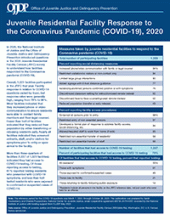Surveys
Elder Abuse Survivor Equity (EASE) Study: National Longitudinal Trajectories and Translation for Practitioners and the Public
Life-course and Intergenerational Effects of Crime and Criminal Justice Involvement: Identifying Risks and the Search for Resilience
Mapping the Continuum of Support for Violent Extremism in the United States
Domestic Terrorism Targeting America’s Political Elites
Inclusive Research: Engaging People Closest to the Issue Makes for Better Science & Greater Impact; 2023 NIJ Research Conference Plenary
This panel will discuss what inclusive research is, how to conduct it, and what issues and challenges exist about engaging in it. “Inclusive research” has its history as a participatory research method designed to ensure people closest to the issue or problem under study are authentically engaged in the research process rather than simply being “research subjects.” While community-based participatory research has begun to take on greater prominence in the criminal justice realm, such efforts are largely confined to qualitative research inquiries.
See the YouTube Terms of Service and Google Privacy Policy
What Has Longitudinal Research on Teen Dating Violence Taught Us?
VICTIMIZATION SURVEYS AND CRIMINAL JUSTICE PLANNING
Juvenile Residential Facility Response to the Coronavirus Pandemic (COVID-19), 2020
Estimating School Climate Traits Across Multiple Informants: An Illustration of a Multitrait-Multimethod Validation Through Latent Variable Modeling
Measuring the Impact of Victim Services
Campus Sexual Assault Responses (CSAR): Informing Trauma-Informed Policies, Protocols, and Training
Sexual violence is a significant criminal justice problem with long-term effects for its victims. In particular, sexual assault on or related to college campuses across the United States presents a growing public health and economic burden, starting with significant impacts on academic outcomes.
See the YouTube Terms of Service and Google Privacy Policy
Economic Justice for Survivors of Intimate Partner Violence
See the YouTube Terms of Service and Google Privacy Policy
Measuring School Climate: Validating the Education Department School Climate Survey in a Sample of Urban Middle and High School Students
Phased Evaluation of an OVC-Funded National Resource Center: Assessing VictimConnect’s Implementation and Outcomes for the Victim Service Field
Breaking the School-to-Prison Pipeline: Implications of Removing Police from Schoolsfor Racial and Ethnic Disparities in the Justice System
Campus Climate and Sexual Violence Experiences of Students Attending Historically Black Colleges and Universities
Youth Suicide Prevention and School Climate Measurement Act of 2015: Report
An exploratory study of violence and aggression against teachers in middle and high schools: Prevalence, predictors, and negative consequences
"Shadow Costs: The Effect of Economic and Informational Inequality on Court-Order Compliance".
Impact of Information Security in Academic Institutions on Public Safety and Security: Assessing the Impact and Developing Solutions for Policy and Practice
Residential Burglary: A Comparison of the United States, Canada and England and Wales
Latent Fingerprint Interoperability - Survey State Addendum
Learning from Doing Evaluating the Effectiveness of the Second Chance Act Grant Program
Reauthorized in 2018, the Second Chance Act (SCA) aims to reduce recidivism and improve outcomes for people returning from state and federal prisons, local jails, and juvenile facilities through the provision of federal grants. During this panel, National Institute of Justice-funded researchers will detail two ongoing evaluations of the SCA grant program:
- An evaluation of the effectiveness of the SCA grant program per Title V of the First Step Act.
- A longitudinal examination of the long-term impacts of the SCA program.
See the YouTube Terms of Service and Google Privacy Policy



